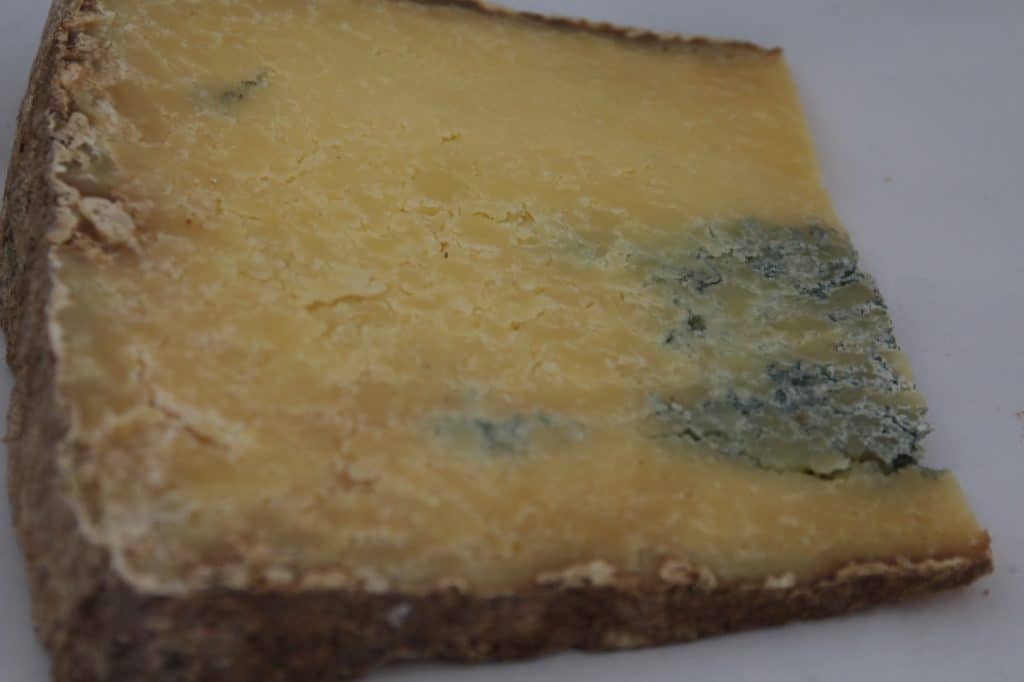Beautiful Bleu de Termignon – how it all started?

Have you ever tasted Bleu de Termignon? If not you should seriously consider doing that. It will be a kind blue cheese educational journey. It is a real, natural blue cheese made at a few farms rather high up in the mountains of Savoie. Within the boundaries of the Vanoise national park between the valleys of Tarentaise and Maurienne. Beautiful area. But what’s so special about Bleu de Termignon?

Bleu de Termignon – an original?
Although running the risk of repeating myself and become boring I have to remind you about André Simon in Cheeses of the World from 1960 where he says: “Blue Cheshire is not made, it happens.” That’s exactly the point which fascinates me a lot. This is one of the issues that makes cheese so interesting; biology, nature and living life. Bleu de Termignon is a blue cheese where nature still decides the outcome. You surely remember the story about Charlemagne, penned by Notker the Stammererer, aka Notker Balbulus.
Also read: Blue Cheese isn’t made – it just happens
From beautiful Savoie
Bleu de Termignon hails as it is from the mountainous Savoie region in eastern France. There are just four small farms making it from June through September every year. The process is not like other cheese making processes, but not going further into that part of it. However, they mix fresh curd with curd made to days earlier. Bind it with cloth and puts it into moulds. Removes it more or less regularly from the mould to change cloth before it is set aside to wait for nature getting to work. Or not. The outcome is not at all always predictable. There is no blue culture added, Penicillium Glaucum is present on the grass and flowers and herbs the cattle feed on. No needles to give the moulds air to breathe. I have been told the blue moulds do not need all that much oxygen to survive anyway, so I don’t know if the needles are more a habit than a need. Apart from Bleu de Termignon, Spanish Cabrales is also an exception from the rule.
A cheese to taste?
As said, this is about education. If you enjoy blue cheese at all it is a must to have tasted Bleu de Termignon. If you dare not go any further that the pasteurised industrial varieties you’ll find in any supermarket, do not spend neither time nor money on this cheese. Waste.
Wherever you find yourself in the blue cheese landscape, you should know that this cheese is different from any other blue cheese you have tasted. Bleu de Termignon is probably also showcasing how far we have moved away from the original. It might just be you may have a blue cheese without any bluing. In that case you’re fooled by nature and you have to try one more time. Well, most of us buy a piece from a cheesemonger which gives us the opportunity to check if the cheese is blue or not. Texture is firm and crumbly. The firmness might remind you of an alpine cheese, but that’s about all. Perhaps closer if there are no bluing at all. The rind is also well worth a close look. Does not look very edible, so I advice you not to try.
Tasting notes says a touch of bitterness, especially just beneath the rind. Savoury, grass and herbs. Meaty and some barnyard. Acidity. Did I loose you now? Not very uncommon cheese tasting notes this. Complex flavours that sit long in your mouth. If cheese is something that you care for, this is a cheese you have to taste before you die. No less.
To drink
Perhaps something unorthodox, just as the cheese itself? A Chinon blanc from the Loire. Move up the price scale. If you’re in for something sweet, try a red sweet on the Tannat grape from the Madiran region of France.
Beautiful Bleu de Termignon – how it all started? Read Post »
